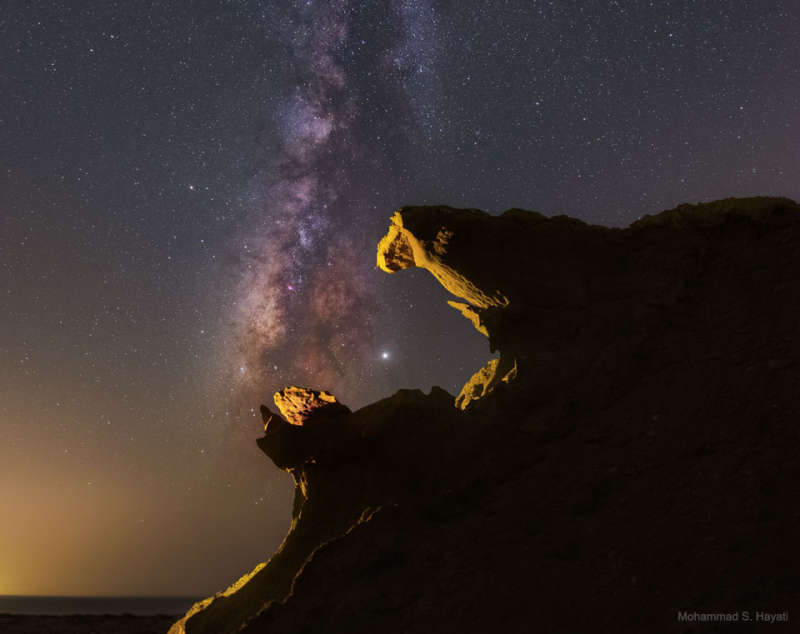
|
Credit & Copyright: Mohammad S. Hayati
Explanation:
This is a good month to see Jupiter.
To find
our Solar System's largest planet in your sky,
look toward the southeast just after sunset --
Jupiter should be the brightest object in that part of the sky.
If you have a binoculars or a small telescope, you should be able to
see Jupiter's
four brightest
moons right nearby,
and possibly some cloud bands.
The featured image was taken about a month ago from the
Persian Gulf.
The image shows Jupiter just to the right of the nearly vertical band of the central
disk of our
Milky Way Galaxy.
The unnamed rock formations appear in projection like the jaws of a giant monster
ready to engulf the Jovian giant.
When you
see Jupiter,
it may be interesting to know that NASA's robotic
Juno
spacecraft is simultaneously
visiting and studying the
giant planet.
Saturn is also visible this month, and although it is
nearby to Jupiter, it is not as bright.
|
January February March April May June July August September October November December |
| ||||||||||||||||||||||||||||||||||||||||||||||||
NASA Web Site Statements, Warnings, and Disclaimers
NASA Official: Jay Norris. Specific rights apply.
A service of: LHEA at NASA / GSFC
& Michigan Tech. U.
Based on Astronomy Picture
Of the Day
